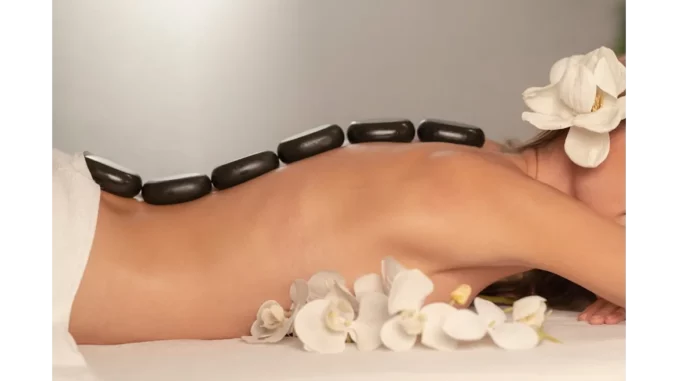
A serene atmosphere filled the room as I sat down with Emma Thompson, a wellness enthusiast and part-time massage therapist, who was eager to share her insights on how to give a massage to your partner. Emma’s experience and passion for creating relaxing environments were palpable. She began by emphasising that learning to give a massage is more than just a skill—it’s a journey towards deeper connection and intimacy with your partner.
“Setting the mood is crucial,” Emma said with a smile, her eyes lighting up as she recounted her own experiences. “It’s not just about the physical touch; it’s about creating a space where both of you can relax and connect on a deeper level.”
Creating the Perfect Ambience
Emma led me to her massage room, which she had meticulously prepared to demonstrate the ideal setting. The lighting was dim, casting a gentle glow that immediately made me feel at ease. Soft, instrumental music played in the background, blending harmoniously with the faint scent of lavender from the essential oil diffuser in the corner.
“Dim lighting is non-negotiable,” Emma noted. “It helps to signal to the body that it’s time to relax. Soft music is another layer of tranquillity. I usually go for instrumental tracks to avoid any distractions from lyrics.”
Emma also recommended using candles to add to the calming environment, though she cautioned against strong scents that might overwhelm the senses. “A few well-placed candles can make a world of difference,” she said, lighting a couple to demonstrate.
Choosing the Right Massage Oil
Emma stressed the importance of selecting the right massage oil. “Pick an oil that feels luxurious but isn’t too greasy,” she advised, warming some oil in her hands before applying it to a willing volunteer—her husband, Michael, who had graciously agreed to help with the demonstration.
“Warming the oil in your hands is a small gesture, but it can significantly enhance the experience,” Emma explained. “No one likes the shock of cold oil on their skin.”
The Art of Touch
Emma began the massage with gentle, long strokes, known as effleurage, to help Michael relax. “Starting slowly is key,” she said. “Use these gliding strokes to warm up the muscles and ease your partner into the massage.”
She then moved on to kneading, focusing on Michael’s shoulders and lower back. “These areas tend to hold a lot of tension, especially if your partner spends a lot of time sitting or working at a desk.”
Emma’s movements were deliberate and thoughtful, a testament to her years of practice. She explained that communication is vital throughout the process. “Always check in with your partner. Ask if the pressure feels right and if there are any areas that need extra attention.”
Techniques to Master
Emma demonstrated several basic massage techniques that she believes every couple should know:
-
Effleurage (Gliding Strokes): As the foundation of any great massage, these long, sweeping strokes help ease muscle tension and warm up the skin.
-
Kneading: Once the muscles are warmed up, gently knead them, especially in tension-prone areas like the shoulders and lower back. This promotes circulation and works out knots.
-
Friction: For deeper tension, use short, firm strokes across the muscles. This technique is perfect for areas that need extra attention, like the back and legs.
-
Tapping (Tapotement): This rhythmic tapping technique stimulates circulation and relieves tight muscles. It’s a fun and energising way to end a massage.
-
Circular Motions: Use gentle circular motions with your fingers or palms to work on smaller areas like the neck and temples. This helps release tension from long hours of screen time or stress.
Communication and Comfort
Throughout the massage, Emma kept a close eye on Michael’s comfort. She adjusted the pillows supporting him and frequently asked for feedback. “Comfort is paramount,” she said. “Make sure your partner is lying comfortably and supported by pillows or a soft surface.”
Emma also highlighted the importance of being present and attentive. “Your partner will feel the difference if you’re distracted. Be fully engaged in the moment.”
Building Connection
As the session came to a close, Emma’s final strokes were light and soothing, a gentle transition back to reality. Michael’s relaxed smile was proof of the effectiveness of Emma’s techniques.
“Learning how to give a massage to your partner is a wonderful way to show love and care,” Emma concluded. “It’s not just about physical relaxation; it’s about creating a shared experience that brings you closer together.”
With these tips and techniques from Emma Thompson, anyone can learn to give a massage that not only relaxes but also strengthens the bond with their partner. So, set the mood, choose the right oil, and let your hands do the talking. Your partner will thank you for it.
Oliver Jenkins


Be the first to comment